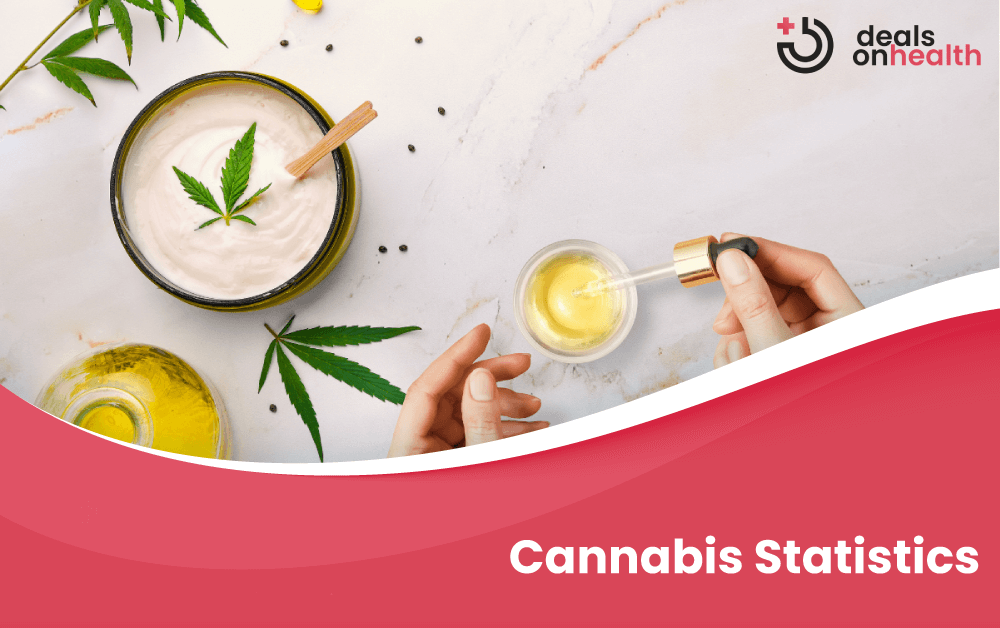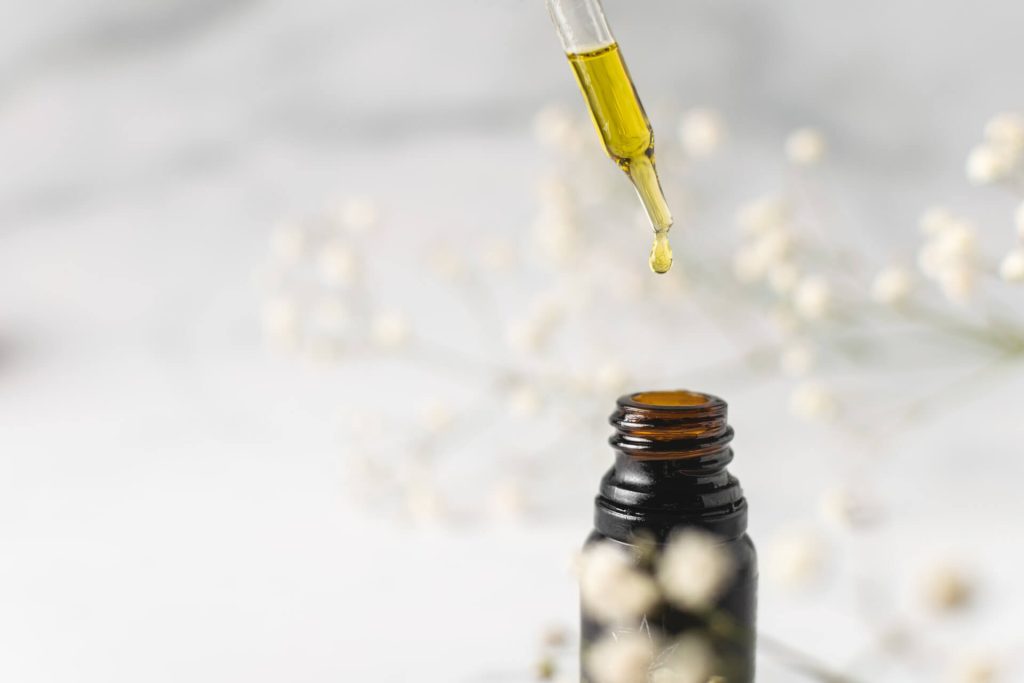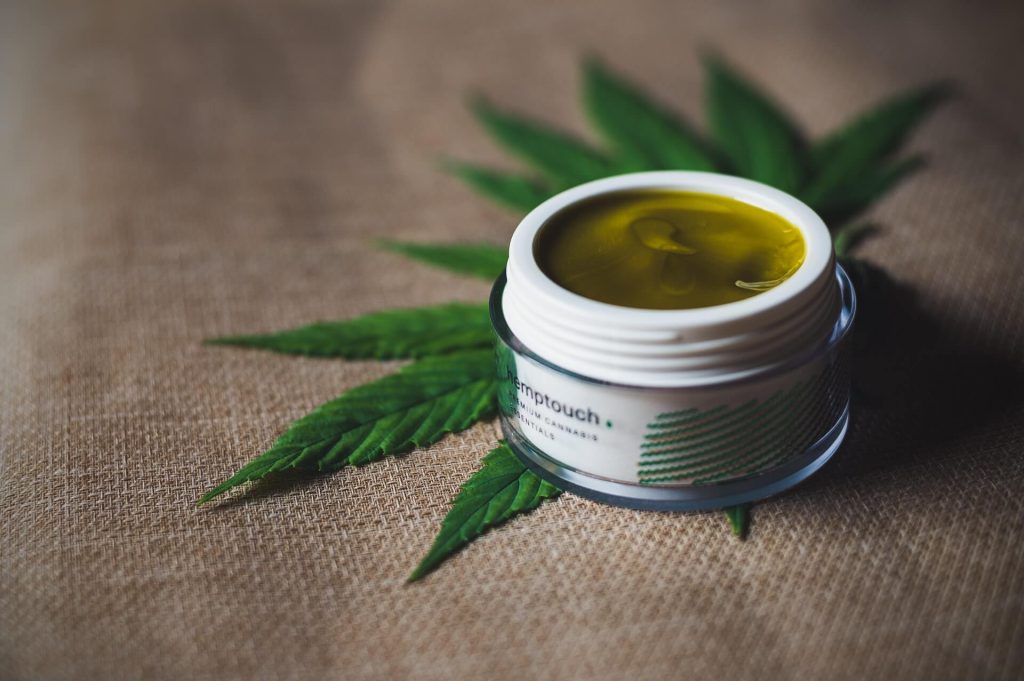
35 Cannabis Statistics for 2024: All About Its Usage and Effects
Posted on |
Cannabis statistics show that most of North and South America, Africa, and Europe have decriminalized it. Some countries have even legalized it for medical and recreational sale and use.
Above all, cannabis is pretty popular among all generations. However, extensive research suggests that it is very appealing to the younger global population. In fact, cannabis death statistics rarely mention marijuana overdose cases.
However, the chemicals in the plant have various negative health effects. As you’ll see below, our organs sometimes cannot recover from marijuana intake.
Before diving into the stats, let’s check out the highlights first.
Top Stats on Marijuana (Editor’s Choice)
- 36 states and 4 territories have legalized medical cannabis use in May 2021.
- 5.8% of people between 18 and 25 have a marijuana use disorder.
- 11% of millennials in the US regularly use medical marijuana.
- Cannabis statistics show that Nevada has nearly 6,000 licensed cannabis cultivators.
- African Americans hold only one percent of cannabis stores in Massachusetts.
- Marijuana can permanently reduce IQ by eight points.
- 321,000 full-time Americans work in the legal cannabis industry as of January 2021.
- The cannabis flower sales in the US will exceed $15 billion by 2025.
Marijuana Usage Stats

1. 127,139 million Americans have used marijuana in their lifetime.
(Statista)
A recent study states that the number of people in the US who have tried cannabis increases every year. To put things into perspective, 104,950 million Americans tried this substance in 2009. However, the number has increased substantially since then.
2. 17.5% of people older than 12 use marijuana.
(SAMHSA)
According to stats on marijuana use, 48.2 million people aged 12 or older are past-year marijuana users. This study started in 2002 when 11% or 25.8 million people in the same age group used cannabis.
3. As of May 2021, the number of states with legal cannabis use for medical purposes is 36, while 4 territories allow the medical use of cannabis products.
(NCSL)
The Supreme Court overturned the initiative to allow the medical use of cannabis in some states. Moreover, medical cannabis program laws differ across the states that have implemented them.
Interesting facts about marijuana reveal that patients with prescriptions from other states aren’t recognized in Alabama.
Also, the law in Minnesota allows limited liquid extract products only in dispensaries. Moreover, patients aren’t allowed to smoke cannabis in Puerto Rico.
4. 18 states, 2 territories, and the District of Columbia enacted the legislation to regulate cannabis for nonmedical use in June 2021.
(NCSL)
Cannabis legalization statistics reveal that a significant number of states are working on legalizing the nonmedical use of cannabis. The newest available cannabis facts and statistics show that voters in Arizona, Montana, New Jersey, and South Dakota approved measures to regulate the sales of cannabis for nonmedical purposes.
Still, marijuana remains a Schedule I substance at the federal level, meaning it has a high potential for dependency and no accepted medical use.
5. 5.8% of people aged 18–25 have a marijuana use disorder.
(SAMHSA)
Statistics about marijuana suggest that this percentage translates to 2 million people. Although the number seems high, 2018 wasn’t the worst year. The marijuana use disorder for the 18–25 age group decreased since the early 2000s when 6% of these people suffered from it.
6. Cannabis consumer demographics show that 35.2% of 12th graders use this substance annually.
(Monitoring the Future)
Unfortunately, cannabis use is pretty common among young students. In 2020, the annual marijuana prevalence level for 8th graders was 11.4%. What’s more, 28% of 10th graders reported marijuana use.
Marijuana trends imply that the situation hasn’t changed much over the years for these age groups.
7. The number of cannabis consumers in the US is expected to reach 46.6 million by 2025.
(Statista)
There were 40.3 million cannabis consumers in the US, and this number is expected to grow. The past and projected data refer to US citizens above 18.
8. 11% of American millennials regularly use medical marijuana.
(Statista)
Marijuana usage stats from a relatively new survey show that millennials in the US make the largest percentage of regular cannabis users. Gen Xers are right behind them with 9%. On the other hand, only 6% of baby boomers are regular cannabis consumers.
Statistic About Marijuana by State

9. The total legal sales of cannabis in Nevada are $1,003 billion in 2021.
(Statista)
This data includes retail and medical sales. It also shows that the total legal sales of marijuana in Nevada grew by 30% since 2018.
Furthermore, cannabis statistics say that the total legal sales in 2018 reached $529.85 million. In addition, it was $639.04 million in 2019 and $684.96 in 2020.
10. Retail sales of cannabis in Colorado amounts to $1.75 million.
(Statista)
Marijuana fun facts show us that Colorado was one of the first states to legalize recreational cannabis use. In addition, the retail sales of cannabis for recreational use in the US have reached $7.5 billion.
11. California’s market value for legal and illicit cannabis is over $5.5 billion.
(Statista)
Stats on marijuana also confirm that California is the state with the largest market for legal and illicit marijuana. New York’s cannabis market is the second-largest with a similar value. Furthermore, an intriguing statistic on marijuana claims that the sales of legal cannabis across the states will grow from 10 to almost $25 billion by 2025.
12. Oregon’s annual sales surpassed $1 billion for the first time in 2020.
(MJBizDaily)
Research shows that the sales in Oregon skyrocketed four months in a row, starting in May 2020. The data includes both recreational and medical marijuana sales.
13. Marijuana sales in the State of Washington reached $1.4 billion in 2020.
(MJBizDaily)
The State of Washington has the second-oldest marijuana market for adult use in the US. In fact, the sales in this state increased from $1.1 billion in 2019.
14. Nevada has nearly 6,000 licensed cannabis cultivators.
(Statista)
Nevada has the greatest number of licensed cannabis cultivators in the US. On the other hand, California has only 2,681 cannabis cultivation licensees, even though this state has the biggest cannabis market in the US.
15. Florida counted nearly 470,000 medical patients in early 2021.
(Leafly)
According to various cannabis statistics, medical marijuana patients continue registering in Florida. In 2020, 170,000 new patients registered in this state. What’s more, Florida ranks third in selling legal cannabis products for medical patients.
16. Dispensary owner demographics show that only 1% of cannabis stores in Massachusetts belong to African Americans.
(Leafly)
African Americans own only 3 out of more than 260 cannabis stores in Massachusetts. Overall, only 1.2% to 1.7% of all cannabis company owners in the US are black.
17. The average price per ounce of high-quality marijuana in the District of Columbia is $591.42.
(Statista)
Cannabis statistics from Statista show that the District of Columbia holds the record for the highest price per ounce of high-quality marijuana, as the average price in the US is $391. Conversely, Oregon has the lowest average price per ounce — $209.99.
18. Missouri has only one marijuana dispensary.
(Statista)
Stats on marijuana point out that Colorado has the most marijuana dispensaries among the states with legalized medical marijuana — 572. In general, Oklahoma has the largest number of dispensaries across the states (2,129).
19. Oklahoma state dispensaries report over $78 million in total revenue in 2021.
(The Norman Transcript)
The average dispensary income in 2021 suggests how well things are going for cannabis dispensaries. The first few months in 2021 outpaced over half of the monthly revenue output for dispensaries in 2020.
Moreover, the number of dispensaries in Norman, Oklahoma, has remained steady — 63.
Cannabis Health Facts and Stats

20. 42% of patients with breast cancer use cannabis to reduce pain, anxiety, and nausea.
(ACS Journals)
Many patients use cannabis before (24%), during (79%), or after the treatment (54%) to reduce side effects. However, cannabis and cancer facts still haven’t proved that this substance can treat any type of cancer.
Yet, 49% of respondents say they use cannabis to treat cancer. Moreover, 75% of breast cancer patients think using marijuana helps reduce various symptoms.
21. Cannabis can increase heart rate by up to 20 to 50 beats per minute upon inhaling it.
(NIH)
Marijuana negatively affects heart rate. Upon inhaling it, the heart rate speeds up and sometimes even doubles. Additionally, the breathing passages relax and enlarge. The blood vessels in the person’s eyes expand, too. That’s why people with sleep problems should avoid consuming cannabis.
22. Cannabis statistics about reproductive health show that women using cannabis while trying to conceive are 41% less likely to conceive than non-users.
(NIH)
The findings of a recent study show that cannabis can affect women’s fertility. Only 42% of the respondents using cannabis got pregnant during this study. Simultaneously, 66% of non-users conceived.
23. Cannabis statistics confirm that 1 in 10 people who use marijuana will become addicted.
(SAMHSA)
It’s hard to overdose by using marijuana. However, people do risk their health. Cannabis addiction is one of the possible outcomes. Research also shows that one in six people become addicted if they start using cannabis before turning 18.
24. Using cannabis at a young age can cause permanent IQ loss of eight points.
(SAMHSA)
Brain health damage is, in this case, one of the long-term negative effects. Unfortunately, the lost IQ points do not come back, even if a person quits marijuana. Furthermore, marijuana use is linked to depression, anxiety, suicide planning, and psychotic episodes.
Other Notable Stats and Interesting Facts About Cannabis

25. 55% of 10th graders report marijuana to be fairly or very easy to get.
(Monitoring the Future)
Overall, drug availability has declined among younger adolescents. However, marijuana is still very easy to get, according to more than half of 10th graders. Likewise, 28% of 8th graders say that marijuana is fairly easy to get.
26. Cannabis sales of recreational marijuana in California increased by 159% in the wake of the coronavirus outbreak.
(Statista)
Statistics show that the sales of marijuana increased in three states in the wake of the coronavirus outbreak. In addition, the sales in Washington state and Colorado also increased by 100% and 46% on the same day, respectively.
27. Legal cannabis supports 321,000 full-time American jobs as of January 2021.
(Leafly)
Interesting cannabis facts about employment tell us that the cannabis industry supports many jobs across the states.
To put that in perspective, legal cannabis workers in the US outnumber electrical engineers, EMTs, and paramedics. In fact, California is the leading cannabis employer with 57,970 full-time jobs.
28. Cannabis trends point to the 68% of adults who believe marijuana should be legal in the US.
(Statista)
Public support for the legalization of marijuana has increased drastically over the last few decades. For instance, only 34% of Americans were pro-legalization two decades ago. Nowadays, over two-thirds of citizens support marijuana legalization in the States.
29. 420 fun facts reveal that the cannabis plant contains about 540 chemical substances.
(NCCIH)
THC is probably the most widely known substance in the cannabis plant. Furthermore, marijuana owes its effect on people’s mental state to THC, one of the hundreds of cannabinoids detected in the plant.
30. Cannabis demographics expose male Gen Xers as the biggest customers during the pandemic (over $150 per month).
(Leafly)
The established US customers increased their average monthly spend by 33% in 2020. The pandemic sales exploded because many Americans relied on cannabis as a mental health and wellness product.
Stats on marijuana customers further show that female Gen Zers spent the least of all age groups during the same period — up to $90 per month. Interestingly, the members of the Silent Generation spent between $90 and $130 per month on average.
31. The effects of eating or drinking marijuana start after 30 minutes to 1 hour.
(NIDA)
One of the useful and interesting facts about cannabis is that smoking marijuana sends THC from the lungs directly to the bloodstream and the brain. So, the person inhaling it feels the effects almost immediately. Conversely, THC travels more slowly from the stomach to the rest of the body.
Cannabis Statistics Regarding the Future Projections

32. The sales value of adult-use cannabis in the US will be $21.65 billion in 2027.
(Statista)
Based on the data gathered over the years, the volume of adult cannabis use in the US will continue to grow across the states. Marijuana use statistics suggest that the US will have the largest adult-use cannabis market in North America in 2027.
33. The global cannabis market will grow at a 13.9% CAGR from 2021 to 2026.
(Mordor Intelligence)
A relatively new study shows that the global cannabis market is worth $22.1 billion. Furthermore, marijuana user statistics say that the proven therapeutic properties of the substance, legalization, and advancements in intellectual property rights of cannabis will lead to the market’s growth.
34. By 2025, the sales of cannabis flower in the US will exceed $15 billion.
(Statista)
The latest marijuana data says that the sales of adult-use cannabis flower in the US are valued at $7.2 billion in 2021. In comparison, the sales of cannabis flower in the US were nearly $5.7 billion in 2020. In 2019, the sales were even lower — around $3.6 billion.
35. South Dakota will add 2,965 cannabis jobs by 2025.
(Green Market Report)
South Dakota is one of the newly legalized states. Naturally, businesses will open up and create new job opportunities. In 2019, this state had zero cannabis jobs because there wasn’t a legal state cannabis market.
Cannabis Statistics — Conclusion
All in all, cannabis is widespread in today’s world. It has found its way to all generations and classes of people. In addition, the favorable price and availability make cannabis an accessible recreational drug.
Apart from its usage in healthcare, cannabis is beneficial as a therapeutic drug. It can reduce pain and help people survive aggressive treatments.
Frequently Asked Questions
How many customers do dispensaries have?
Cannabis dispensaries are growing in popularity. However, it’s difficult to say the exact number of customers that visit them. Some studies say that 60% of cannabis dispensary customers are first-time visitors.
On the other hand, only 40% of them are return customers. Regular customers typically go to the dispensaries every 7.8 days and spend 20 minutes on average in stores.
How many people consume cannabis in the US?
New data shows that 127,139 million Americans have tried cannabis. In fact, cannabis is the most commonly used illicit drug in the US. A recent study states that 25% of Americans consume cannabis.
What’s more, cannabis consumption in the US is 56% up from 2018. Projections are that 46.6 million Americans will be active cannabis consumers by 2025.
Does cannabis increase heart rate?
An increased heart rate is one of the frequent cannabis symptoms. A person’s heart rate can speed up by 20 to 50 beats per minute. It can even double. After inhaling marijuana, the substance travels extremely fast from the lungs to the bloodstream and the heart. So, people suffering from heart conditions are at a greater risk.
How many people use medical marijuana?
The estimated number of medical marijuana patients in the US is 3.6 million. Recent findings show that California has the highest number of medical marijuana patients — approximately 2 million people.
Studies tell us that marijuana has many medical benefits. However, pain reduction and sleep are the most common reasons for using this substance.
What percentage of the world smokes weed?
More than 150 million people worldwide regularly smoke cannabis. This makes cannabis one of the world’s most popular recreational drugs. Overall, more than 200 million people consume cannabis in various ways.
According to cannabis statistics, the highest number of cannabis users is in Asia. North and South America and Africa are next on the list.
